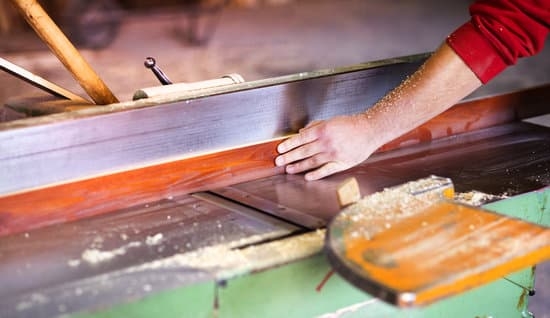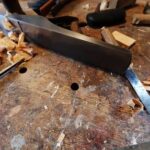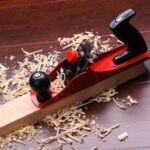Woodwork and baseboards play a crucial role in the overall aesthetics of a room, adding warmth and character to any space. However, over time, these surfaces can accumulate dirt, dust, and grime, detracting from their beauty. In this article, we will discuss how to clean dirty woodwork and baseboards effectively.
Maintaining clean woodwork and baseboards is essential not only for their appearance but also for the health and hygiene of your home. Dust and dirt buildup on these surfaces not only make them look unsightly but can also harbor allergens and bacteria, impacting indoor air quality. Regular cleaning not only preserves the beauty of your woodwork but also ensures a healthier living environment for you and your family.
Understanding the different types of materials and finishes used in woodwork is crucial before embarking on a cleaning routine. Depending on whether your woodwork is painted, stained, or unfinished, different cleaning methods may be required to avoid damaging the surface. By using the right tools and materials tailored to your specific woodwork type, you can effectively remove dirt and grime without causing any harm to the finish.
Understanding Different Types of Woodwork Materials and Finishes
Woodwork and baseboards come in a variety of materials and finishes, each requiring specific care and cleaning methods to maintain their beauty and longevity. Understanding the different types of woodwork materials and finishes is essential before embarking on a cleaning project to avoid damage or discoloration.
Types of Woodwork Materials
There are many types of wood used for baseboards and woodwork, such as pine, oak, maple, cherry, mahogany, and more. Each type has its own unique characteristics that can influence how they should be cleaned. For example, softwoods like pine may be more prone to scratching, while hardwoods like oak tend to be more durable.
Finishes for Woodwork
Woodwork can also have different finishes applied to them, such as paint, stain, varnish, or wax. Knowing the type of finish on your woodwork is crucial as it determines the appropriate cleaning solution and method to use. For instance, painted woodwork may require a gentle soap solution for cleaning, while varnished surfaces might need a specialized wood cleaner.
Considerations for Cleaning
When determining how to clean dirty woodwork and baseboards based on their materials and finishes, always consider their specific needs. Some finishes may be sensitive to certain chemicals or abrasive cleaners that could potentially damage the surface. It’s important to test any cleaning solution on a small inconspicuous area first before proceeding with the entire cleaning process to ensure compatibility and prevent any unwanted effects.
Tools and Materials Needed for Cleaning Dirty Woodwork and Baseboards
When it comes to cleaning dirty woodwork and baseboards, having the right tools and materials is essential to achieve the best results. Here is a list of items you will need to effectively clean and maintain your woodwork and baseboards:
- Microfiber cloths or soft rags: These are gentle on wood surfaces and help to trap dust and dirt without scratching.
- Dusting brush or vacuum with brush attachment: Use this tool to remove loose dirt, debris, and cobwebs from corners and crevices before wiping down the surfaces.
- Mild dish soap or wood cleaner: Choose a gentle cleaning solution that is suitable for the type of finish on your woodwork.
- Warm water: Dilute your chosen cleaner in warm water for effective cleaning without damaging the wood.
- Cotton swabs or a small brush: These can be handy for reaching into tight spots or intricate carvings on your woodwork.
- Furniture polish or beeswax: Optional for adding shine and protection after cleaning, particularly for natural wood finishes.
Proper maintenance of your tools is also crucial for achieving optimal results when cleaning dirty woodwork and baseboards. Make sure to regularly wash microfiber cloths, clean dusting brushes, and replace worn-out tools as needed.
Remember that using harsh chemicals or abrasive materials can damage the finish of your woodwork. Always test any new cleaner in an inconspicuous area before applying it widely. With the right tools and materials at hand, you can efficiently clean your woodwork and baseboards without causing any harm.
Preparing the Area Before Cleaning
Woodwork and baseboards are often overlooked when it comes to cleaning, but they play a significant role in the overall appearance of a room. Before diving into how to clean dirty woodwork and baseboards, it is essential to prepare the area properly by removing any dust and debris that may have accumulated. Dust and debris can make the cleaning process more challenging and less effective, so taking the time to prep the area will ultimately lead to better results.
To start preparing the area for cleaning, use a vacuum cleaner with a brush attachment or a microfiber cloth to remove loose dust from the woodwork and baseboards. Pay special attention to corners, crevices, and molding where dust tends to accumulate. If there are any cobwebs present, gently remove them using a duster or broom.
Once you have removed the loose dust, consider giving the woodwork and baseboards a once-over with a damp cloth. This will help pick up any remaining dust particles as well as prepare the surface for deeper cleaning. Avoid using excess water on wood surfaces as it can cause damage over time. By taking these preparatory steps, you ensure that your cleaning efforts will be more efficient and effective in restoring the beauty of your woodwork and baseboards.
| Woodwork Preparation | Baseboard Preparation |
|---|---|
| Use vacuum with brush attachment | Remove loose dust with microfiber cloth |
| Gently wipe with damp cloth | Pay attention to corners and molding |
Step-by-Step Guide on Cleaning Woodwork and Baseboards
Woodwork and baseboards can easily accumulate dust, dirt, and grime over time, making them appear dull and neglected. Regular cleaning is essential not only for maintaining the aesthetics of your home but also for prolonging the lifespan of these elements. Knowing how to clean dirty woodwork and baseboards properly can help you keep your living space looking fresh and well-maintained.
To effectively clean dirty woodwork and baseboards, you will need the following tools and materials:
- Vacuum cleaner with brush attachment
- Microfiber cloths or dusters
- Mild soap or wood cleaner
- Warm water
- Soft-bristled brush or toothbrush
- Cotton swabs
Before starting the cleaning process, it is important to prepare the area by removing any dust, spider webs, or debris that may have accumulated on the woodwork and baseboards. This initial step will make the overall cleaning process more efficient and ensure that no additional dirt is spread around during cleaning. Use a vacuum cleaner with a brush attachment to gently remove loose particles from crevices and corners.
Next, follow these steps for cleaning your woodwork and baseboards:
- Mix warm water with mild soap or wood cleaner in a bucket.
- Dip a microfiber cloth or sponge into the soapy water mixture.
- Wring out excess water from the cloth to prevent over-saturation.
- Wipe down the woodwork and baseboards in sections, moving from top to bottom.
- Use a soft-bristled brush or toothbrush to scrub stubborn areas or intricate details.
- Rinse the cloth frequently in clean water to avoid spreading dirt.
- Dry the surfaces with a clean towel to prevent water damage.
By following this step-by-step guide on how to clean dirty woodwork and baseboards, you can restore their original shine and luster while also improving the overall cleanliness of your living space. Remember to be gentle when scrubbing to avoid damaging delicate finishes or paint layers on the woodwork. Regular maintenance is key to keeping your woodwork looking its best for years to come.
Tips and Tricks for Removing Stubborn Stains and Grime
Woodwork and baseboards can often accumulate stubborn stains and grime over time, making it challenging to keep them looking clean and fresh. However, with the right tips and tricks, you can effectively remove these tough stains and restore the beauty of your woodwork. Here’s a guide on how to clean dirty woodwork and baseboards where conventional cleaning methods might not be enough.
One effective method for removing stubborn stains from woodwork and baseboards is to create a cleaning solution using warm water and mild dish soap. Simply mix the two ingredients in a bucket or bowl until suds form, then dip a soft cloth or sponge into the solution. Gently scrub the stained areas with the damp cloth, taking care not to oversaturate the wood.
For tougher stains that don’t budge with just soap and water, you can try using a paste made from baking soda and water. This natural abrasive paste can help lift away grime without damaging the wood finish. Apply the paste to the stained areas, let it sit for a few minutes, then scrub gently with a soft brush or cloth. Finally, wipe off any residue with a clean, damp cloth.
In some cases, when dealing with particularly stubborn or set-in stains on woodwork or baseboards, you may need to use specialized cleaners designed for wood surfaces. Always test any new cleaner on an inconspicuous area first to ensure it doesn’t cause any damage or discoloration. Follow the manufacturer’s instructions carefully when using these products to achieve the best results in safely cleaning your woodwork and baseboards.
| Method | Tip |
|---|---|
| Dish Soap Solution | Mix warm water with mild dish soap for an effective stain removal. |
| Baking Soda Paste | Create a paste with baking soda and water for tougher grime removal. |
| Specialized Cleaners | Use cleaners specifically formulated for wood surfaces after testing on a small area. |
Maintaining Clean Woodwork and Baseboards
Keeping woodwork and baseboards clean not only enhances the overall appearance of your home but also helps to prolong the life of these surfaces. By taking preventative measures, you can reduce the frequency and intensity of deep cleaning sessions. In this section, we will discuss some tips and tricks to maintain clean woodwork and baseboards effectively.
Regular Dusting
One of the simplest ways to keep your woodwork and baseboards looking clean is by regularly dusting them. Use a microfiber cloth or a duster to gently wipe away dust and dirt from these surfaces. Dusting not only prevents buildup over time but also keeps allergens at bay, promoting a healthier indoor environment.
Protective Coatings
Consider applying protective coatings or finishes on your woodwork and baseboards to make them more resistant to stains, scratches, and other damages. Polyurethane sealants or varnishes can help create a barrier against moisture, preventing warping or discoloration. Be sure to follow manufacturer instructions for application and reapplication intervals.
Prevent Water Damage
Water can be especially damaging to woodwork and baseboards, causing them to warp or swell. To prevent water damage, avoid allowing water to sit on these surfaces for extended periods. Wipe up spills immediately, use waterproof mats in high-moisture areas like kitchens and bathrooms, and ensure proper ventilation to reduce humidity levels that could harm wooden materials. Regularly inspect for leaks or water damage around sinks, windows, or doors to address issues promptly before they escalate.
By incorporating these preventative measures into your regular cleaning routine, you can maintain clean woodwork and baseboards more efficiently while extending their lifespan. Remember that consistent upkeep is key in preserving the beauty and integrity of these essential features in your home.
Final Thoughts
In conclusion, maintaining clean woodwork and baseboards is essential not only for the aesthetic appeal of your home but also for prolonging the life of these surfaces. By regularly cleaning and maintaining your woodwork and baseboards, you can prevent dirt buildup, discoloration, and potential damage. Following the right techniques and using the appropriate tools can make this task easier and more effective.
To ensure that your woodwork and baseboards remain in top condition, it is important to understand the different types of materials and finishes used. This knowledge will help you choose the right cleaning agents and methods that will not harm or damage the surface. Additionally, taking preventative measures like dusting regularly, using protective coatings, and addressing spills promptly can help minimize the need for deep cleaning in the future.
Remember, a clean home starts from the bottom up – including those often overlooked areas like woodwork and baseboards. By following the step-by-step guide provided in this article on how to clean dirty woodwork and baseboards, you can maintain a healthier living environment while preserving the beauty of your home for years to come. So don’t neglect these important features – give them some TLC today.
Frequently Asked Questions
How Do You Clean Filthy Baseboards?
Cleaning filthy baseboards requires some elbow grease and the right tools. Start by dusting them off with a microfiber cloth or duster to remove loose dirt and grime. Next, use a mixture of warm water and mild dish soap to scrub away any remaining dirt or stains.
For stubborn areas, a magic eraser or a mixture of vinegar and water can be effective in lifting tough stains. Make sure to dry the baseboards thoroughly to prevent any water damage.
How Do You Clean Wood Trim and Baseboards?
When it comes to cleaning wood trim and baseboards, it’s important to use products that are safe for wood surfaces. Start by dusting the trim with a soft-bristled brush or microfiber cloth to remove any loose dirt and debris. To clean dirty woodwork, create a solution of warm water and mild wood cleaner or dish soap.
Use a soft sponge or cloth dampened with the solution to gently wipe down the woodwork, being careful not to oversaturate the wood. Once clean, rinse with a damp cloth and dry thoroughly.
How Do You Clean Dirty Woodwork?
To clean dirty woodwork effectively, start by dusting off any loose debris with a microfiber cloth or soft-bristled brush. If there are sticky spots or built-up grime, consider using a mixture of warm water and mild soap to gently scrub the surface clean.
For tougher stains, you may need to use a commercial wood cleaner following the manufacturer’s instructions carefully to avoid damaging the finish. Once clean, wipe down the woodwork with a damp cloth and dry it thoroughly to prevent any warping or water damage from occurring over time.

Hi everyone! I’m a woodworker and blogger, and this is my woodworking blog. In my blog, I share tips and tricks for woodworkers of all skill levels, as well as project ideas that you can try yourself.





